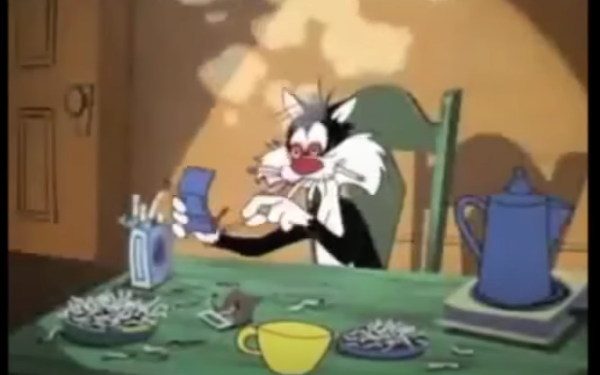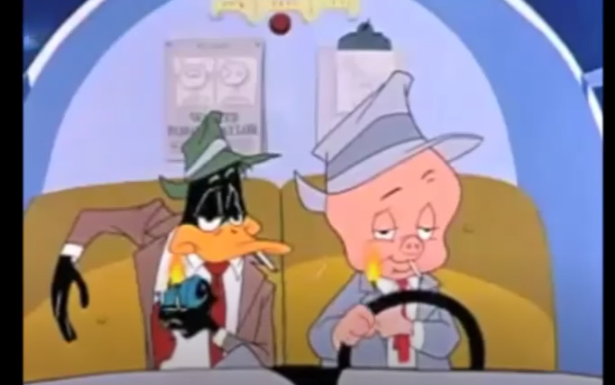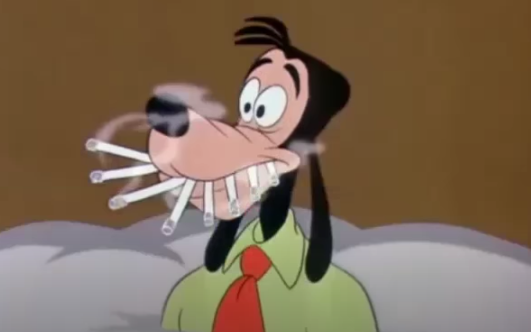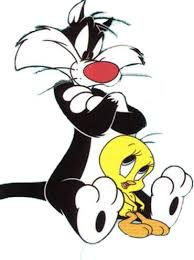
In this family comedy directed by Chris Columbus, Mrs. Doubtfire (1993) uses cartoon animals to reflect Daniel’s anarchic behaviour, letting the audience stipulate as to whether he is the antagonist or protagonist in this story of conflicting parenting styles. From the film’s opening scene, Daniel’s conscientious nature is divulged in an over the top performance via his job as a freelance voice actor. In this role, the audience witnesses Daniel defying orders from the producer and changing the script of the cartoon Pudgy and Grunge. Pudgy and Grunge take on the role of the all -American well-known cartoon Sylvester and Tweety Pie (Fig.1)
.
.
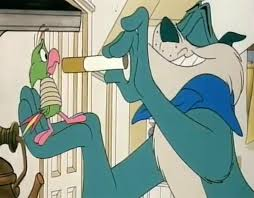
In the sketch, the Sylvester character (Grunge) is offering Pudgy a cigarette before his demise. Daniel believes that this is irresponsible broadcasting and changes the dialogue to spluttering and coughing shouting humorous remarks such as ‘beak cancer, what a way for a bird to die!’, opposing Pudgy to the smoking, though the animation is showing the bird happily drawing from the cigarette (Fig. 2).
.
.
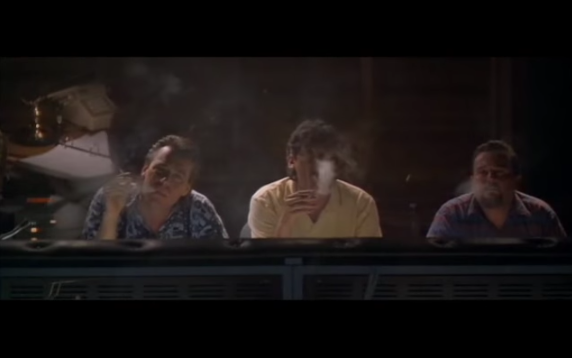
What Columbus proceeds to do in this scene is allow the audience to recognise the trope of the cat and bird cartoon – a seemingly innocent set up of animal characters, and responds to it by highlighting how this omnipresence of animals in children’s media could be detrimental to their upbringing. Animals make up a huge proportion of children’s television shows and cartoons are malleable so can be portrayed anarchically. Columbus plays with blurring these lines with Williams’ character, aligning it with how these children’s programmes are used as a tool for acting as a “nanny”, giving parents respite. The question of whether nannying is detrimental to children is recurrent in Mrs. Doubtfire. Daniel, the creative parent, does not believe that his children should be looked after by anyone other than himself but in trying to ensure this, acts irresponsibly, whereas Miranda who is regarded as the responsible parent, is in favour of nannying, and disapproves of Daniel’s vicarious parenting style. The scene foreshadows Daniel’s rebellious behaviour for the rest of the film as he chooses to constantly defy authoritative figures but does so using his moral compass, leaving the audience confused as to whether he has the children’s best interests at heart. The dialogue that Daniel has in this scene acts as an important indicator as to what was happening in society at that time of the film’s release. Daniel argues that because millions of children watch the cartoon, letting them see Pudgy smoking would be the same as ‘sending them a pack of cigarettes and telling them to light up’, suggesting that television shows were paramount in the amount of influence they controlled (Fig. 4). Daniel looks towards the technical booth to ask their opinion and is met with techies surrounded in a fog, all three smoking cigarettes (Fig.3).
Although this shot is humorous, it is also representing how Daniel is fighting against the tide of the industry and foreshadows his having to relinquish control of his children, but also it gives a nod to the audience in how productions like Mrs. Doubtfire are also fighting against the tide by trying to address issues that are rejected by society such as “nanny” parenting.
